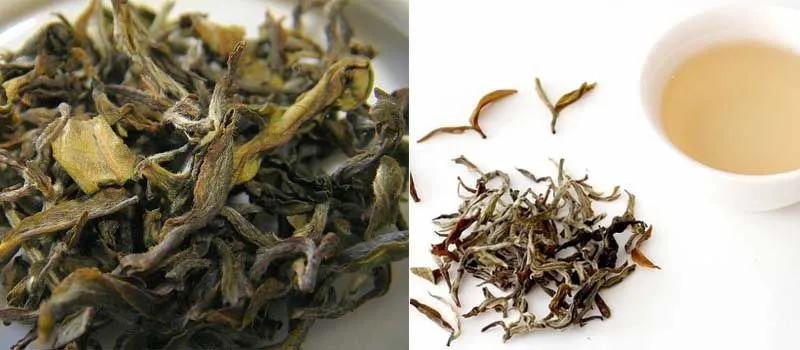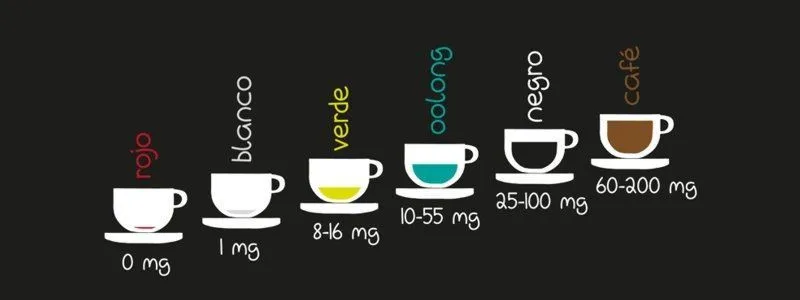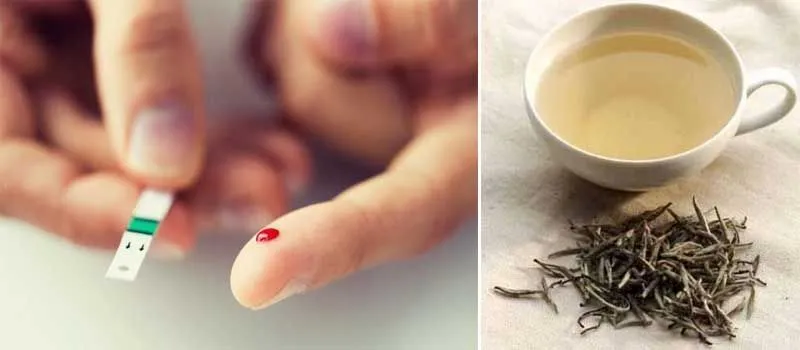Within the infusion market, we have a wide range to choose from. We went from the typical red or green tea, to the classic chamomile or pennyroyal mint. However, we have a lot to choose from, and one of them, the white tea, with many possibilities at the medicinal level.
Table of Contents
Where does white tea come from?
Scientific name: Camellia sinensis
Origin: China (Fujian Province), Eastern Nepal, Eastern Thailand, Taiwan, Sri Lanka and India.
The plant Camellia sinensis, known as the tea plant, is the great producer of different families of infusions, starting with red, green and white tea.
The difference that exists is the process of transformation and oxidation between them. Its extraction is specific, specifically from the buds and young leaves of this plant, letting them wither slightly to obtain the characteristic color.
By these characteristics, it makes your theine content and other components differ and be much more digestive.
To this day there are no very clear references to the origin and discovery of white tea, since some versions claim that its use was prior to white or red tea, and others specify just the opposite.
What is clear is that its global consumption is less than other types of infusions, like black, red or green tea, but it is slowly spreading as research is conducted on its medical functionality.
What is undoubted, given the great magnitude of scientific trials, are the beneficial properties of white tea for the body.

Where is white tea grown?
This plant is native to China, specifically from the province of Fujian. It still has a long history of cultivation and the productions obtained from this area reach a great value.
Geographically, the cultivation of white tea has spread due to the increase in demand. Therefore, we can also see plantations in countries such as Japan, India, Sri Lanka, and Kenya. The latter has its own “designation of origin” and a long history in the production of different native varieties of coffee and tea.
Tea produced in Japan it is practically for self-consumption and very little production leaves its borders. Produces one of the most valued worldwide, and very expensive. The area par excellence of its cultivation is the region of Fukuoka, in Yame.
In Kenya we can find one of the strongest and most pronounced flavors of tea that, as we have said, have native varieties.
Sri Lanka has started the white tea plantation strong, increasing the surface area more and more and trying to conquer the export market, with a tea with a pleasant flavor and very aromatic characteristics.
In the India there is a particular region near the Himalayas where high quality plantations are obtained.
Types of white tea
Although the origin is from the same species of tree, we can find sub-varieties that are grown in different climatic zones and, therefore, slightly different versions are obtained, as well as slightly modified properties of white tea
- Gong Mei
- Bai Hao Yinzhen
- Bai Mu Dan
- Shou Mei
- Puerh white tea
Composition of white tea
Catechins: many of the properties of white tea are due to its content in a variety of active catechins, including EGCG, which is very useful for fighting chronic diseases such as cancer (gallate and epigallocatechin).
Antioxidants: with a slightly higher level of polyphenols compared to green tea.
Tannins: the level of tannins is lower than other types of tea (black, red, green, etc.) but stands out for its protective activity of the cardiovascular system.
Theaflavins: they are polyphenols closely related to tea, which directly affect the bitterness and astringency of tea.
Likewise, the level of theaflavins present in the properties of white tea are slightly lower than other more concentrated teas, such as black or green.
Tearubigins: are the substances responsible for coloration tepic of this type of infusions. Highly studied for its antioxidant and blood sugar-lowering properties. The more color the tea has, the more presence of tearubigins, as occurs in black tea.
All these compounds, in different concentrations and added to some that have not been mentioned also provide a benefit, make up the properties of white tea and they are the ones that give rise to the scientific results obtained.
What’s so special about white tea? Theine levels
For people who don’t tolerate high concentrations of theine, with the properties of white tea you’re going to be in luck.
Due to its process of obtaining and the fact of only selecting the young leaves, its concentration this compound is really low, compared to other infusions.
Let’s see in this image a comparative table of the amount of theine contained in different infusions and coffee (caffeine).

Its volume in antioxidants is higher than the string of other teas (which come from the same tree), but this also means that its theine content is below 1 mg per cup.
What are the properties of white tea?
High in antioxidants
Compared to the different infusions that we can find in the supermarket, the properties of green tea stand out for their higher concentration of antioxidant elements.
If we talk about numbers, green tea contains 3 times more polyphenols than green tea, although it is known that the antioxidant activity becomes practically the same.
What are polyphenols?
Polyphenols are chemical substances found in different plants and that stand out for their antioxidant activity. There are numerous benefits in humans such as the prevention of cardiovascular diseases and are being investigated for their possible action against the development of cancer
Specifically, in these polyphenols we find some particles of vital importance known as Catechins.
These catechins are a secondary metabolite found in different species such as mimosa or Centaurea maculosa. It has the special ability to reduce the free oxygen content and act against the oxidation of LDL or “bad” cholesterol.
Improves the circulatory system
Different studies have been found where they relate the properties of green tea with the reduction of coronary heart disease and risks of infarction.
This same study links a consumption of at least 1 cup of green tea daily with a 21% reduction in the rate of suffering from coronary disease. [See study]
Facilitates weight loss
There are different infusions that have shown in trials the efficacy as a complement in weight loss.
This is the case of the green tea and white tea, which contain different phytochemicals capable of acting at the enzymatic level in the burning of fat.
This is due to the level of caffeine and catechins they contain, including also a type of antioxidant known as epigallocatechin 3-gallate (GEGC) that has a direct relationship with the reduction of localized fat. [See study]
This, added to the increase in metabolic activity (increase of between 4 and 5%) increases the rate of calories burned (between 70 and 100 kcal per day).
Delays aging
In several large-scale studies, a comparison was made of the different types of teas on the market and the properties of white tea to assess antioxidant response and behavior in delaying aging.
Among all of them, the properties of white tea show you better results due to the concentration of enzymes that retranslate the degradation and loss of components such as elastin or collagen. [See study]
The elastin It is a protein that can be found in different tissues such as bone, cartilaginous tissue or the conjunctiva, and has a protective function and is the one that intervenes in the recovery of the tissue before an effort.
Other infusions, such as rooibos tea, have a similar effect, so they can be combined for greater benefit.
Antimicrobial properties
One of the tests that is usually done frequently with most plant extracts is to evaluate your potencial against the development of bacteria or fungi.
We all know the global problem to stop the evolution of superbugs and the low antibiotic resources we currently have.
This study, conducted at Pace University (New York) demonstrated a superior ability of white tea’s properties to eliminate bacteria over green tea.
In the case of fungi, demonstrated a good response to the development of Saccharomyces cerevisiae and Penicillium chrysogenum.
Therefore, it is common to see among toothpastes and mouthwashes the use of the properties of white tea among its ingredients, as well as other medicinal plants such as rosemary or thyme extract.
Properties of white tea in the treatment of diabetes

Of the different medicinal plants that we can use to regulate blood sugar levels, the properties of white tea can contribute to this great action.
Studies on white tea in this area show positive results (like other types of teas), improving glucose regulation in sick patients [See study].
In addition, of this, trials continue to be carried out in rats to evaluate the response of the different types of diabetes, with equally significant and hopeful responses. [See study].
Although research is still being done to show more evidence, it appears that the positive results are attributed to the Catechins present in the properties of white tea.
Activates the body and concentration
Undoubtedly, the positive effect of theine in this type of infusions and coffees is important to maintain concentration and alertness to symptoms of sleep or fatigue.
Although the presence of theine, as we have seen in one of the images in this article is significantly lower than other types of teas, there is the presence of theine in white tea.
This is due to the presence of a specific amino acid, the L-theanine, which acts on the nervous system producing stimulation.
With this, it also contributes to reduce mental fatigue and states of fatigue due to physical exertion, in addition to other benefits such as those shown below.
- Balancing sleep-wake cycles
- Reduce states of anxiety
- Reduce mental and physical stress
- Improve cognition and mood synergistically with caffeine
Anti-inflammatory activity
Of all the compounds present in the properties of white tea, the Catechins they are responsible for many anti-inflammatory effects that we are going to describe.
This can also be used in cases of diseases that involve chronic inflammation of different tissues, such as diabetes, some types of cancer or atherosclerosis.
At the muscular level, catechins are involved in reduction of inflammation caused by blows or extraordinary physical exertion, as documented in a Japanese study. [See study].
Benefits of white tea on the functioning of the kidneys
There is a dissemination study carried out in 2015 where the properties of different teas in different concentrations and their involvement in the improvement of the renal system are studied.
It was especially related to the negative effects of environmental pollution and its effect on different organs, including the kidney.
Therefore, the traditional Chinese diet was evaluated, where the properties of white tea are consumed frequently, with good results due to its antioxidant effects [See study].
Properties of white tea to strengthen memory
The role of catechins in delaying memory loss in adulthood has been deeply studied. This research has also been linked to the effect of these antioxidant substances and the protection of the cerebral cortex. [See study].
Therefore, the properties of white tea are recommended for people who notice a loss of memory in old age, from the point of view of delaying cognitive decline.
How to drink White tea
The most common way to take advantage of the properties of white tea is in the form of an infusion.
In many establishments or online stores we can buy this product that comes in the form of envelopes or directly in bulk.
In the latter case, to prepare a cup of tea, we add 2 small tablespoons (of coffee) for each cup of water, following the same process that we would do with the preparation of any infusion.
We can take 2 to 4 cups daily to take advantage of all the benefits mentioned.
Purchase Options
We leave you some options to take advantage of the properties of white tea. The most common and what has been most subjected to scientific studies is through the infusion of its leaves.
However, you can also find oils for application on the skin (with antioxidant and antimicrobial effect).
Side effects and possible contraindications
Incompatibilities and contraindications of the properties of white tea with drugs, possible allergies or delay in the absorption of minerals have been studied. It has been proven how various flavonoids such as those contained in green tea are able to inhibit the correct absorption of non-heme iron to 70%, so it is not recommended to consume it in people who suffer from anaemia.
Can white tea be consumed in pregnancy?
Although white tea is one of the infusions that contains less theine, there are discrepancies about its consumption. Certain entities recommend its consumption at low doses to benefit from all the effects mentioned above.
Other sources prefer to recommend eliminating their consumption during the period of pregnancy and lactation, because they want to minimize the consumption of any active substance related to caffeine or theine.
Ideally, consult with a medical specialist if the properties of white tea can affect the pregnancy or development of the fetus. If there are no serious conclusions, it is best not to take it.
Do you know more properties of white tea that we do not add annotated?
